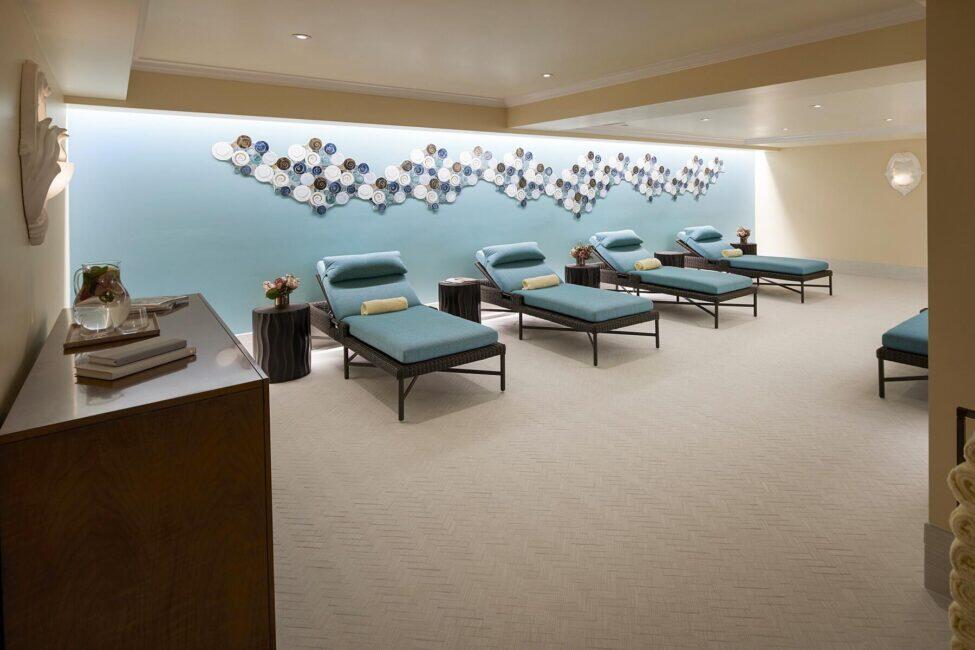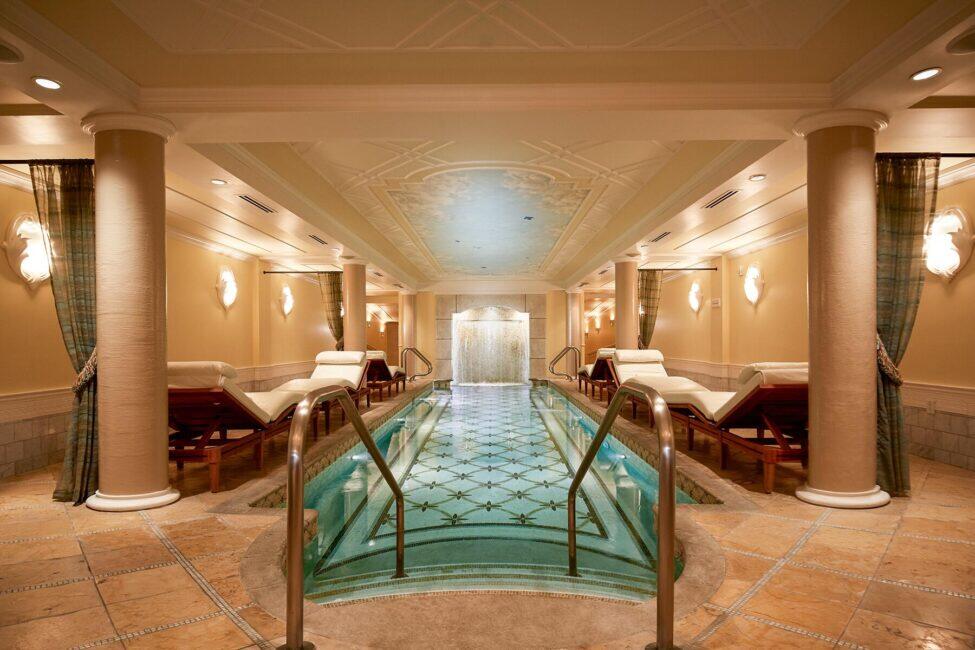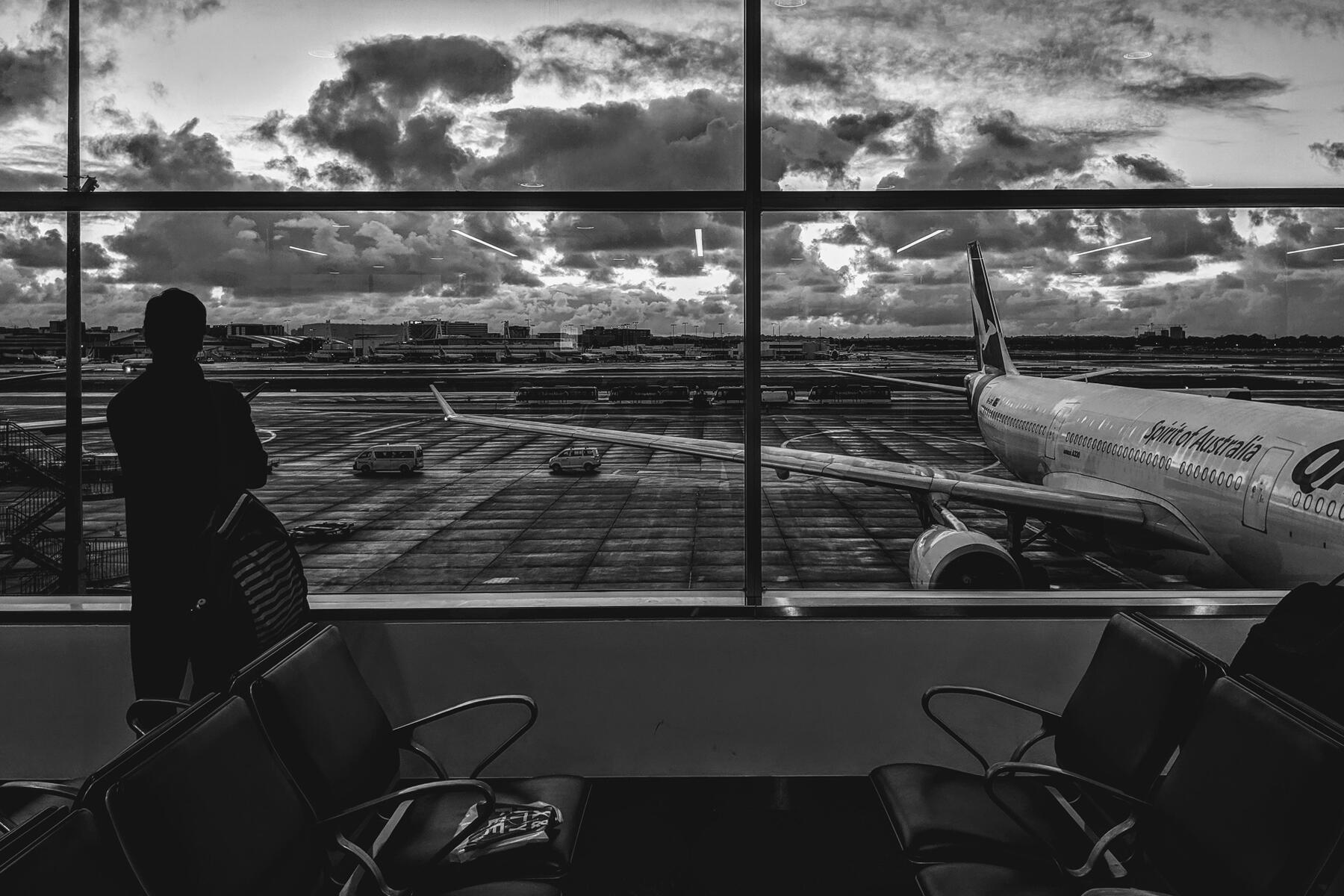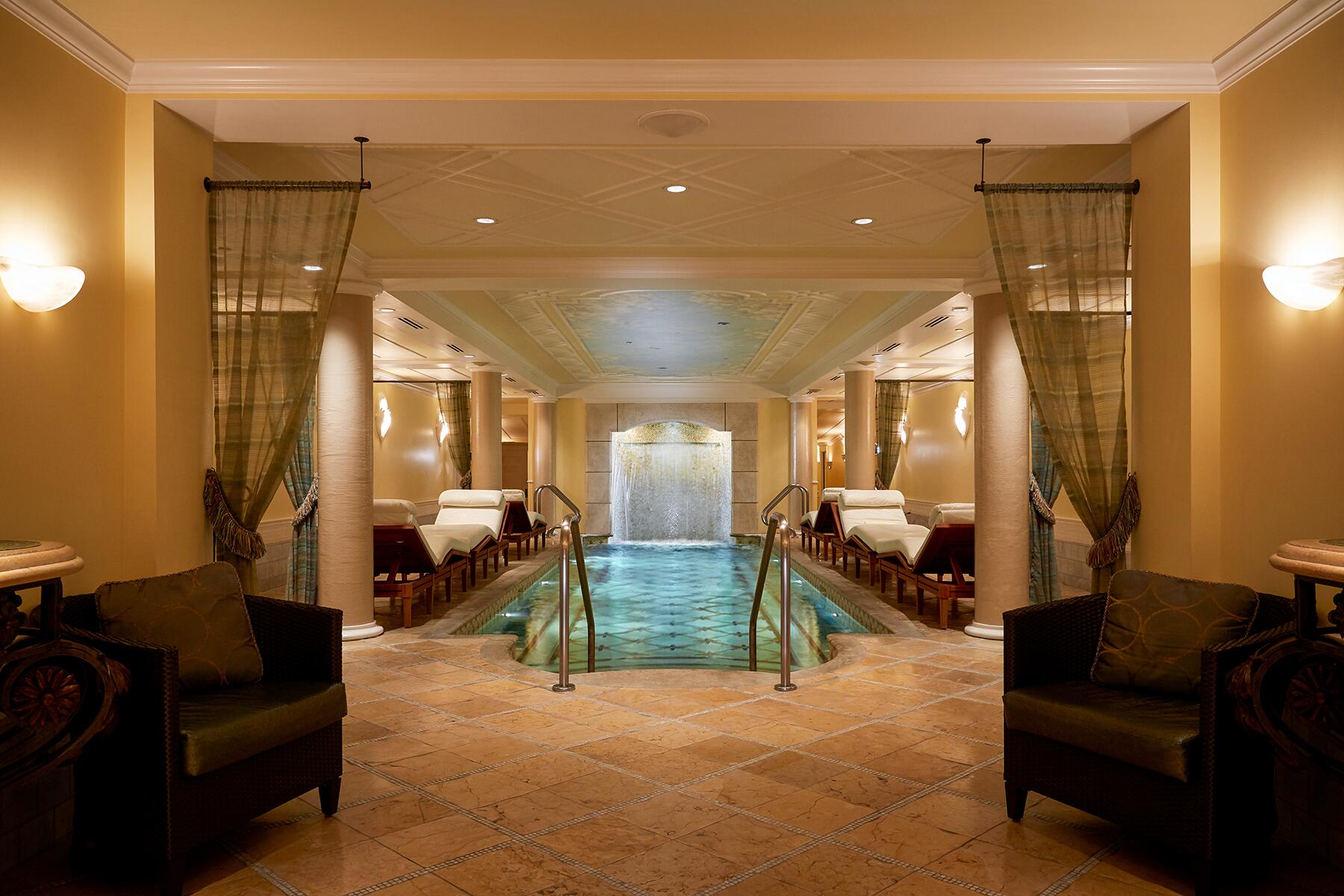What spas are doing to ensure your safety (and a relaxing experience).
As I headed to the locker room at Kohler Waters Spa, I heard the waterfall’s familiar soothing tumble into the plunge pool, noted the monotony of plush white robes worn by other spa guests as they strolled past, and inhaled the resort’s signature Hollyhock scent.
But I wasn’t easily fooled: This visit was different than my half dozen or so before this.
Per Wisconsin’s mask mandate, everyone at the spa wore one, and the absence of lingering over magazines or chatting with friends in chaise-lounges pre- or post-treatment was noticeable. My temperature was taken at the check-in desk upon arrival and paperwork, settled right then and there, to avoid a return visit after my facial. Inside my locker were two plastic containers with lids containing yogurt-covered raisins and almonds.
Still, I slipped into comfy sandals and a robe and found my therapist in a walkway outside the treatment room.
What’s it like to visit a spa during a pandemic? Is everyone from the front desk to your therapist doing all they can to keep you safe? How can you prepare?
Recommended Fodor’s Video
If you’re craving a massage, wrap or facial, or simply want to be pampered, the first self-care item you should tackle is choosing a safe spa.
“Most spas, to be honest with you, have already had these procedures in place pre-COVID,” says Patrick Huey, chairman of International SPA Association’s board and vice president of spa and retail at Montage International, adding that the country’s first spas began opening in June.
If you’re craving a massage, wrap or facial, or simply want to be pampered, the first self-care item you should tackle is choosing a safe spa.
What Makes a Spa “Safe”?
Pre-COVID, you would check-in at the spa—in person—and fill out paperwork noting your contact information and health history. You might even answer questions about preferred massage pressure and the regularity in which you visit spas.

Now, this information is being collected online, well in advance of your appointment. “We never even touch the paper document,” says Huey. “Spas [also] never have to deal with sanitizing the pen and the clipboard.” The online intake form—inquiring if you have a fever or other symptoms, if you’ve been diagnosed with COVID or have been in contact with anyone else who has—is another safety measure.
“If we see something on the form, we can address it pre-arrival, so [guests] don’t get into a situation where they come to the spa and can’t have a treatment. That can be embarrassing,” says Huey.
Some spas are even calling guests before arrival to go over new procedures. “We lay out exactly what the experience is going to be,” says Huey. “That transparency piece is really important.”
How Spas Are Different Now
What I immediately noticed at Kohler Waters Spa was fewer guests. My therapist confirmed this by telling me that the spa only books at 50% capacity. This is awesome on the day of your visit but not so great if you seek a last-minute appointment, as treatment rooms might be full. What Huey suggests is, when you book, decide every service you want. Pre-COVID, you might have been able to tack on a mani-pedi to your massage when you checked in, but probably not now. Consider visiting during the week if you can, as weekends continue to be peak times. This is especially important if you are only in the spa’s region for a few days and don’t have flexibility.
Spas have also added extra cleanup time between treatments, further whittling down the number of clients seen in one day. This also provides the therapist with time to breathe without a mask on, perhaps even experience fresh air on an outdoor break.
What Are Some Red Flags?
If, when you arrive at the spa, you see staff not wearing face masks or a lack of hand sanitizers in common areas, “that means there’s a gap in communication between the leaders of that spa and the workers,” says Huey. You might also notice zero signage about keeping you safe, such as reminders to wash hands regularly and wear a mask or maintain six feet of social distancing with other guests. “If spas can’t explain what they are doing, then that’s a problem,” says Huey. “If you walk into a place and it doesn’t feel right, you have to trust your intuition.”

While you may lose $200 from the spa if there is not a refundable policy (more on that below), this is nothing compared to medical bills if you catch COVID and are out of work for a spell (lost income).
Huey says you should expect, at most spas, an expansive rebooking policy, way more flexible than before. Because, during COVID, things just come up—like a family member catching the virus, juggling your kid’s remote learning with your new work-from-home status, or just general anxiety. Or, worse, you may start to experience symptoms that weren’t there when you booked. Any spa that demands you still come in for your service is clearly not looking out for their other guests’ best interests. “If things shift in those questions [pre-check-in] you may have to reschedule. You want to go to a spa that’s understanding of that,” says Huey.
Preparing for Your Spa Visit
This is the part where you put on your investigative-reporting hat and troll the internet for signs that this is a safe spa. Don’t do this obsessively, just a quick perusing. Check the spa’s Facebook page and Yelp for recent comments and reviews, along with its website for news of new practices during COVID. Don’t be shy about calling up the spa. Huey says it’s totally normal to ask things like “Will the locker rooms be open?” and “Are your amenities open?”
“It helps you plan your day if you know you’re not going to be using the sauna or the steam room or the plunge pool,” says Huey. You might also not bring items like a swimsuit or items to dry and style your hair—because you won’t be getting wet. This is the part of my spa visit where I erred: I assumed everything would be closed except for treatment rooms. This meant I did not bring a suit and did not get to enjoy the plunge pool, sauna, or steam room.
And, finally, because the food and beverage stations at spas have been removed, it’s not a bad idea to tote your own snacks. Water and tea can be requested, and even brought right to you for a personal touch, but tasty, healthy treats may not be available. At Montage properties, says Huey, amenities are handed to guests on a tray upon request.
“What we’ve found is that guests love that level of attention—even through the masks, the gloves, the barrier,” says Huey. “All of these steps keep our associates safe and make them feel comfortable in the environment.”




